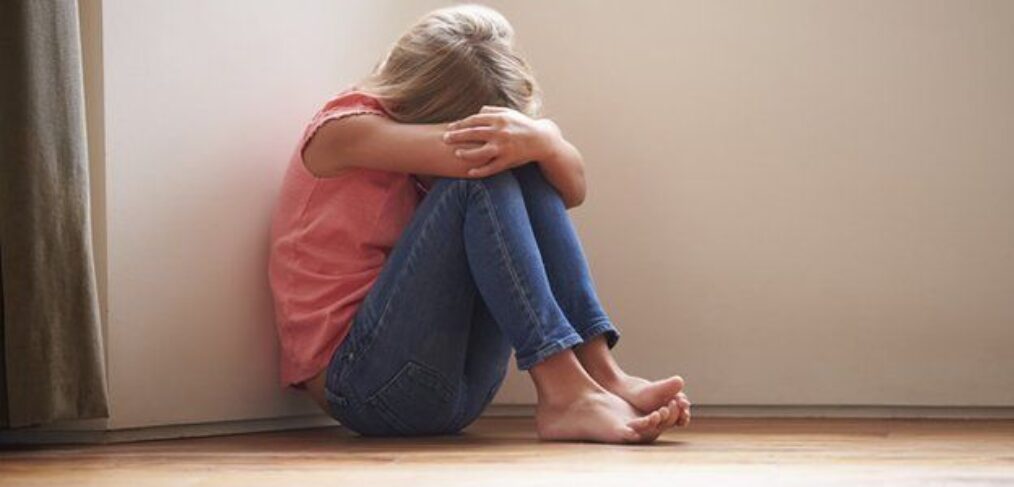
Why it’s so hard to be a girl
Vancouver photographer Vince Hemingson gives a snapshot of a different kind.
And it will take your breath away.
Girls are being held to impossible standards of beauty, at younger and younger ages. Their sexualization is leading to low self-esteem, depression and eating disorders. How they feel about their bodies and what they are doing to them is heartbreaking. Hemingson offered this post in response to criticisms he has received on Facebook about the physical appearance of his female models.
By Vince Hemingson
In the past few days, I have had people leave comments on photographs of mine that I felt could not be ignored. And while the majority of viewers raved about the images, I was astonished that there was a vocal minority who felt that they could criticize women for being either too fit or too voluptuous. That they referenced the Holocaust and concentration camps, farm animals and beached marine mammals in their comments was beyond the pale.
I wrote each of the posters, saying as much. I was pleasantly surprised to have four out of five of them write me in return within 24 hours, and apologize to both me and the model. And in a Facebook fashion group that I am a member of, it is not uncommon to hear it suggested that someone needs to hit the gym. Again, this is crossing the line. It is one thing to have an opinion (God, knows that I have a few), but another thing entirely to be cruel.
After you read this, you might think twice before making a comment about someone else’s physical appearance. I don’t think we should ever lose sight of the fact that beauty comes in all ages, and many sizes, forms and shapes, not to mention, ethnicities. As a photographer who shoots a majority of women in both my commercial and artistic work, most of whom, by anyone’s standards, would be thought of as not just beautiful, but breathtakingly attractive (never mind bright, accomplished and successful), I am continually caught off guard by the pervasive negative effect that modern beauty culture as promulgated by mainstream media — often times by magazines that are ostensibly for a female audience and consumer — has on women’s self-confidence about their appearance.
To quote my mother, if you don’t have something nice to say about someone, don’t say anything at all. It’s one thing to criticize a photograph for some perceived technical or artistic flaw, but it is another thing entirely to comment on someone’s physical appearance. I have shot models from 18 to 80, from alternative to agency, from size zero to zaftig, and in every instance I can never remember not being able to find something beautiful about them to photograph. A good photographer will find a way to shoot that beauty that makes it both obvious and self-evident. More importantly, if you are healthy and happy, it goes without saying, you are already beautiful. Maybe we just need to say that more often.
Body Image and Its Effect on Teenaged Girls
http://www.canadianwomen.org/facts-about-girls
As girls enter adolescence, from ages 9 to 13, their confidence declines sharply and they experience higher rates of depression. In Grade Six, 36% of girls say they are self-confident, but by Grade Ten this has plummeted to only 14%. 7
In Grade Six, boys and girls report the same levels of depression—about 25% says they feel depressed at least once a week. 8 However, by Grade Ten rates of depression in girls have jumped—they are three times more likely than boys to be depressed. 9 For girls, depression typically stems from “low self-esteem, negative body image, feelings of helplessness and hopelessness, and stress.” 10
More than 20% of BC girls say they have deliberately cut or harmed themselves. 11
In one BC study, 50% of girls reported wishing they were someone else. 12
WHAT CAUSES THIS DECLINE IN GIRLS’ MENTAL HEALTH?
According to the American Psychological Association (APA), the widespread sexualization of girls and women in our society plays a major role in the deterioration of girls’ mental health. Sexualization occurs when a person’s main value is believed to come from their sexual appearance—rather than their intelligence or other qualities—and when they are held to unrealistic standards of physical attractiveness. 13
Research links sexualization with the three most common mental health problems facing girls: eating disorders, low self-esteem and depression. 14
There is ample evidence to show that girls are obsessed with their appearance and weight:
Almost half a million girls have posted YouTube videos of themselves asking “Am I pretty, or am I ugly?” 15
Ninety percent of girls say the fashion industry and media puts a lot of pressure on them to be thin. 16
Girls will go to great lengths to try and achieve the perfect body: In just one year, the number of girls aged 18 and younger who had breast implants nearly tripled. 17
In a BC study, 60% of girls who were actually too thin said they were too fat. 18
In another study, about one third of girls said they had starved themselves or refused to eat in order to become thinner. 19
Another study found that about 50% girls in Grade Six were dieting—by Grade Ten, this had increased to almost 60%.
Thirty-seven percent of all Canadians know a girl who thinks that she is not pretty enough, and as a result, is dieting or wants to get plastic surgery. 20
Studies show a link between body dissatisfaction in female adolescents and starting to smoke. 21
Popular culture teaches girls to focus on their appearance and to play a secondary role in life.
Girls are bombarded with media images of females who are tall, underweight and white. These images of women are artificially created, using digital manipulation, and are highly unrealistic. Almost all of these images show women as passive, posed in sexually provocative poses for the purpose of selling consumer products.
Women in movies are much more likely than men to show exposed skin, be dressed provocatively, and have an “unrealistic body ideal.” 22
Research shows that seeing sexualized images of women causes many girls to be highly critical of their bodies, undermining their confidence and increasing feelings of shame, anxiety and self-disgust. 23
These statistics break my heart. We need to open our eyes and see the beauty that is not obvious at first glance but that is there nonetheless. That might even be the definition of both art and a great photograph.

